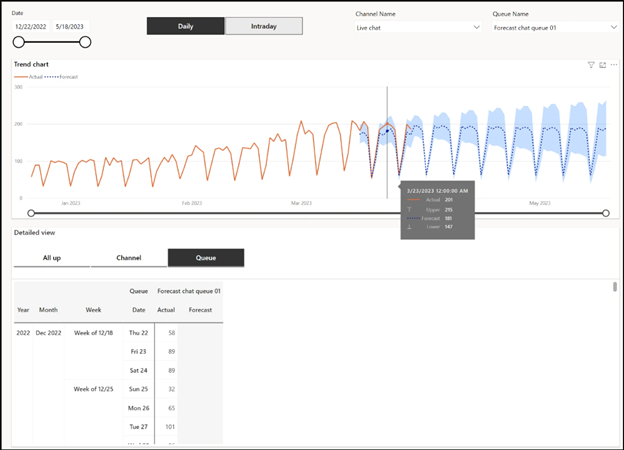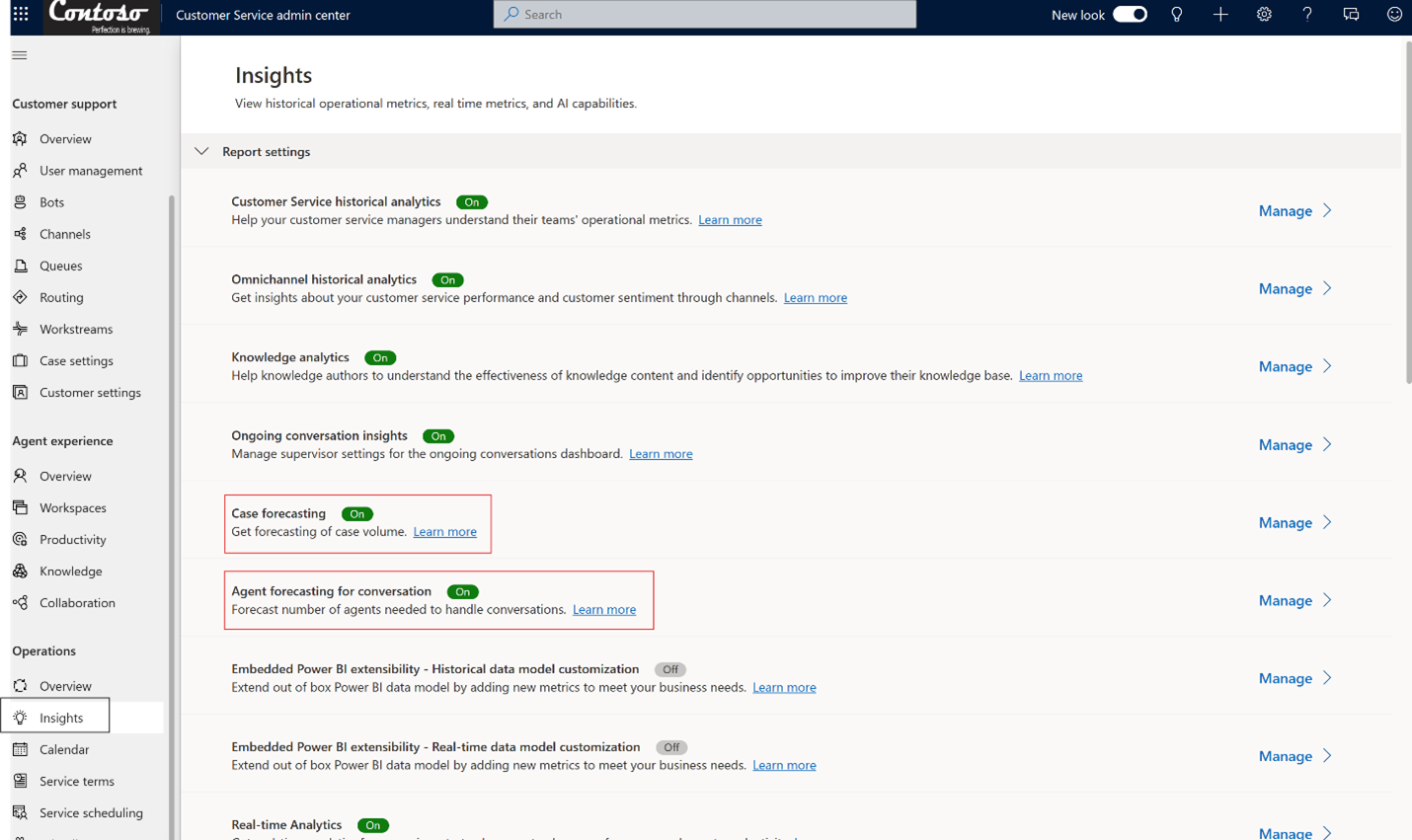Predict and manage support needs with forecasting in Dynamics 365 Customer Service
Hi, Microsoft 365 Insiders! My name is Isha Sahni, and I’m a Senior Product Manager on the Customer Success Engineering team. I’m excited to announce that you can now use forecasting in Dynamics 365 Customer Service to predict service volumes and agent demands, helping you to direct your support resources more effectively.
Predict and manage support needs with forecasting in Dynamics 365 Customer Service
Forecast reports offer a structured way to predict support needs for your organization, using historical data as a basis. They’ll help streamline your operations, boosting efficiency and lowering costs while preserving a positive customer experience.
You can use forecast reports to plan staffing levels and other resource allocation based on predicted case and conversation volumes, as well as predicted agent demand for conversations.
Learn more: Maximize efficiency with forecasting in Dynamics 365 Customer Service – Microsoft Dynamics 365 Blog
Key feature functionalities
Incorporating service-level metrics
The forecasting service uses operational metrics—such as service level, shrinkage, and concurrency—to predict agent demand. By considering these factors, organizations can ensure that the agent ability forecast aligns with service-level agreements and operational constraints, boosting efficiency and customer satisfaction.
Improving prediction accuracy
You can compare your service volume and agent demand forecasts against actual performance data. This will help determine your forecasts’ accuracy and identify ways to increase it.

Auto-detection of holidays
Our forecasting model uses historical traffic patterns to identify holidays automatically, leading to more precise predictions. This helps organizations adjust to meet holiday-related changes in service demand across regions, improving service quality and satisfaction despite fluctuations in customer activity.
How it works
- Open the Customer Service admin center and select Insights > Report settings.

- To enable the case forecasting report, find the Case forecasting row, select Manage, and then toggle on Enable case forecasting.
- To enable the agent forecasting for conversation report, find the Agent forecasting for conversation row, select Manage, and then toggle on Enable agent ability forecasting.
- Customize your reports by setting a refresh schedule, changing the time zone, specifying a start date for historical data, or choosing seasonality options.
Tips and tricks
- Larger historical data sets, especially those that include data for every day in the set, can result in more correct forecasts.
- Extending the historical range of your data set may also increase prediction accuracy, as it allows the forecast model to capture more patterns and variations over time.
- Forecast accuracy tends to be higher for the near future than for distant dates.
Requirements
You must have an active license in Dynamics 365 Customer Service to use the forecast service.
Availability
This feature is available now to all Microsoft Dynamics 365 Customer Service users.
Feedback
We want to hear from you! Please feel free to share your feedback with Dynamics customer support.
NOTE: To access the feedback link, you must meet the criteria outlined in the Requirements section of this blog.
Posted in Feature Deep Dives, For Business, Web
Comments are closed.
